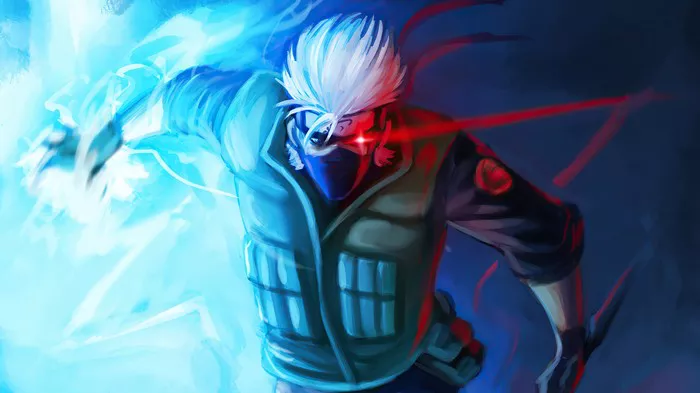In the vibrant tapestry of Japanese language and culture, names often carry profound significance, reflecting heritage, values, and aspirations. One such name that holds a special place in the hearts of anime enthusiasts and aficionados of Japanese pop culture is “Kakashi.” From its origins in traditional folklore to its modern interpretation in popular media, Kakashi embodies a rich tapestry of meanings and associations that resonate with audiences around the world. In this article, we embark on a journey to unravel the multifaceted meaning of Kakashi in Japanese culture, exploring its linguistic roots, cultural symbolism, and contemporary relevance in various contexts.
Linguistic Roots of Kakashi
At its core, the name Kakashi (かかし) is composed of two kanji characters: “kaka” (駆) and “shi” (使). Individually, these characters carry distinct meanings and connotations that contribute to the overall significance of the name.
駆 (kaka): The kanji “kaka” is associated with the concept of driving, urging, or propelling forward. It conveys a sense of movement, action, and dynamic energy, suggesting a force that pushes things forward or motivates them to progress.
使 (shi): The kanji “shi” is often translated as “use” or “employ” and is associated with the idea of utilization, application, or manipulation. It implies the act of putting something to use or harnessing its potential for a specific purpose.
When combined, the characters “kaka” and “shi” form the name Kakashi, which can be interpreted as “scarecrow” or “field guardian” in Japanese. However, the meaning and symbolism of Kakashi extend far beyond its literal translation, encompassing cultural, mythological, and artistic dimensions that enrich its significance.
Cultural Symbolism of Kakashi
In traditional Japanese culture, Kakashi holds a prominent place as a symbol of agricultural prosperity, rural traditions, and seasonal festivities. Originating from the practice of creating scarecrows to protect crops from birds and pests, Kakashi has evolved into a cherished icon associated with harvest celebrations, folk rituals, and community gatherings.
Guardian of the Fields: As a scarecrow, Kakashi serves as a guardian of the fields, standing sentinel over crops and warding off potential threats to agricultural productivity. Its presence symbolizes the efforts of farmers to cultivate and protect the land, ensuring a bountiful harvest for the community.
Harbinger of Seasons: Kakashi is closely linked to the rhythm of the seasons, particularly the transition from summer to autumn. During harvest festivals and seasonal events, Kakashi figures prominently in decorations, parades, and traditional performances, heralding the arrival of cooler temperatures and the bounty of the harvest.
Spirit of Creativity: Beyond its practical function, Kakashi embodies the spirit of creativity and resourcefulness inherent in Japanese craftsmanship. Crafted from straw, cloth, and other natural materials, Kakashi exemplifies the ingenuity of rural artisans who transform humble materials into works of art imbued with cultural significance.
Symbol of Resilience: Kakashi’s resilience in the face of adversity—braving wind, rain, and sun to protect crops—serves as a metaphor for human perseverance and determination. It reminds us of the importance of resilience, adaptability, and community cooperation in overcoming challenges and adversity.
Contemporary Relevance of Kakashi
In contemporary Japanese culture, Kakashi continues to captivate imaginations and inspire creativity across various mediums, from literature and art to film and animation. One of the most iconic representations of Kakashi can be found in the world-renowned manga and anime series “Naruto,” created by Masashi Kishimoto.
Kakashi Hatake: In “Naruto,” Kakashi Hatake is a central character and a prominent figure in the ninja world. As a highly skilled ninja and mentor to the series’ protagonist, Naruto Uzumaki, Kakashi embodies traits such as wisdom, strength, and resilience. His enigmatic personality, masked visage, and formidable abilities have endeared him to fans worldwide, earning him a place in the pantheon of beloved anime characters.
Cultural References and Homages: Beyond “Naruto,” Kakashi’s influence can be seen in various aspects of popular culture, including literature, music, and fashion. References to Kakashi and his iconic mask appear in songs, memes, and fan art, serving as a testament to the character’s enduring popularity and cultural impact.
Merchandise and Collectibles: Kakashi-themed merchandise, including action figures, apparel, and accessories, is highly sought after by fans of “Naruto” and anime enthusiasts. From cosplay costumes to replica masks, fans can immerse themselves in the world of Kakashi and express their admiration for the character through collectibles and memorabilia.
Conclusion: Embracing the Legacy of Kakashi
In conclusion, Kakashi transcends its origins as a humble scarecrow to become a cherished symbol of cultural heritage, artistic expression, and creative imagination in Japanese culture. From its roots in agricultural traditions to its modern interpretation in popular media, Kakashi embodies the timeless themes of resilience, community, and the cyclical rhythms of nature.
Whether depicted as a guardian of the fields, a mentor to aspiring ninjas, or a beloved icon in popular culture, Kakashi continues to captivate hearts and inspire generations of enthusiasts around the world. As we celebrate the legacy of Kakashi and its enduring significance, we honor the spirit of creativity, ingenuity, and cultural exchange that enriches our lives and connects us to the vibrant tapestry of Japanese culture.

